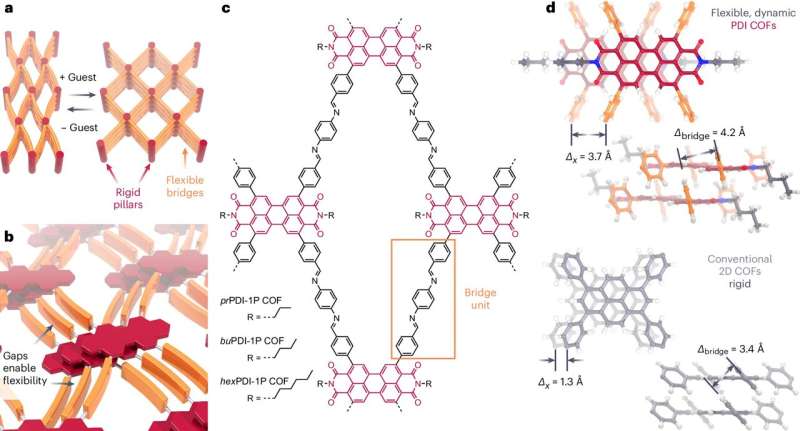This article has been reviewed according to Science X's editorial process and policies. Editors have highlighted the following attributes while ensuring the content's credibility:
fact-checked
peer-reviewed publication
trusted source
proofread
New 2D polymer brings scientists a step closer to realizing switchable quantum states

An international research team led by Dr. Florian Auras from Dresden University of Technology (TUD) has succeeded in developing a new type of material in the rather young research field of covalent organic frameworks. The new two-dimensional polymer is characterized by the fact that its properties can be controlled in a targeted and reversible manner. This has brought the researchers a step closer to the goal of realizing switchable quantum states.
These results
were recently published in Nature Chemistry. Porous covalent organic frameworks (COFs) are a class of highly ordered,
Previous research on COFs has generally focused on the construction of rigid frameworks with static material properties. Dr. Florian Auras and his team at the Chair of Molecular Functional Materials at TUD have now developed a design strategy for dynamic two-dimensional COFs that can open and close their pores in a controlled manner, similar to a sponge.
"The main aim of the study was to equip these frameworks, which are normally very precisely ordered but rigid, with exactly the right degree of flexibility so that their structure can be switched from compact to porous. By adding solvent to the molecular sponge, we can now temporarily and reversibly change the local geometry as well as optical properties such as color or fluorescence," says Dr. Auras.
The ability to switch the structural and optoelectronic properties of the materials back and forth in a targeted manner makes the materials particularly interesting for future applications in electronics and information technology.
"Our research results form the basis for our further research into stimuli-responsive polymers, particularly with the aim of realizing switchable quantum states. When working on COFs, I am always fascinated by how precisely their properties can be manipulated by controlling the molecular structure," adds Dr. Auras.
More information: Florian Auras et al, Dynamic two-dimensional covalent organic frameworks, Nature Chemistry (2024). DOI: 10.1038/s41557-024-01527-8
Journal information: Nature Chemistry
Provided by Dresden University of Technology





















